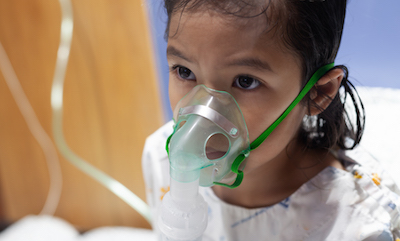New Vaccines Needed against Childhood Pneumonia.
 Pneumonia is the leading cause of death worldwide among children under five years old—greater than malaria, tuberculosis, HIV, Zika virus, and Ebola virus combined.
Pneumonia is the leading cause of death worldwide among children under five years old—greater than malaria, tuberculosis, HIV, Zika virus, and Ebola virus combined.
But the leading causes of severe childhood pneumonia have changed globally, according to a new study by a consortium of scientists from around the world, including a School of Public Health researcher.
The study, published in The Lancet, was the largest and most comprehensive of its kind since the 1980s. It shows the success of decades of vaccination campaigns against the then-leading bacterial causes of severe childhood pneumonia in low- and middle-income countries. Now, viruses cause 61 percent of cases, according to the study, and the respiratory syncytial virus (RSV) alone accounts for 31 percent of cases.
“This underscores the need for both a good vaccine against RSV and a good bedside diagnostic to determine which children do not need antibiotics but may benefit from greater supportive care,” says study co-author Donald Thea, professor of global health.
Led by the Johns Hopkins International Vaccine Access Center (IVAC), researchers conducted the Pneumonia Etiology Research for Child Health (PERCH) study at sites in Bangladesh, The Gambia, Kenya, Mali, South Africa, Thailand, and Zambia. The sites tested for viruses, bacteria, and other pathogens in 4,232 children under five years old who were hospitalized for severe pneumonia, and 5,119 children under five years old without pneumonia in the same communities.
“Prior to this study, we didn’t know which specific viruses and bacteria are now causing most of the severe childhood pneumonia cases in the world, but public health organizations and vaccine manufacturers really need that information to work toward reducing the substantial childhood mortality that pneumonia still causes,” says study co-principal investigator Maria Deloria Knoll, a senior scientist in the Johns Hopkins Bloomberg School of Public Health and associate director of science at IVAC.
Identifying the germs that cause pneumonia is difficult in individual cases and much more so on a scale of thousands of cases, especially in low- and middle-income countries where most pneumonia deaths occur. Researchers in prior pneumonia studies simply lacked the microbiological and analytical resources to produce estimates of the major pneumonia pathogens, Knoll says.
The analytical technique developed for the study to estimate the cause of individual cases of childhood pneumonia is called the Bayesian Analysis Kit for Etiology Research (BAKER), and is available online as an open-source application for use by other public health researchers.
The researchers concluded that, across all study sites combined, viruses accounted for 61.4 percent of cases, bacteria for 27.3 percent of cases, Mycobacterium tuberculosis for 5.9 percent of cases, and fungal and unknown causes for the remainder of cases.
RSV was the leading cause of severe pneumonia in each of the seven countries. Other top causes were rhinovirus, human metapneumovirus, parainfluenza viruses, and S. pneumoniae bacteria.
“We now have a much better idea of which new vaccines would have the most impact in terms of reducing illness and mortality from childhood pneumonia in these countries,” says Katherine O’Brien, who led the study as a professor at the Johns Hopkins Bloomberg School of Public Health and now serves as director of immunizations, vaccines and biologicals at the World Health Organization.
RSV has long been known as a common and potentially serious respiratory pathogen among children and older adults. It remains the leading cause of pneumonia in children under a year old in the United States, according to the Center for Disease Control and Prevention. Several RSV vaccine candidates are being developed and evaluated in clinical trials. A monoclonal antibody therapy, palivizumab, is available for the prevention of RSV disease in children with underlying medical conditions but is not suitable programmatically or financially for widespread use in routine immunization programs.